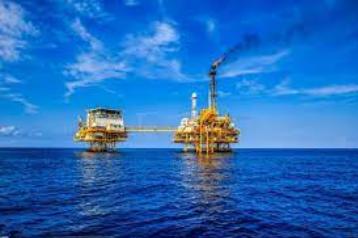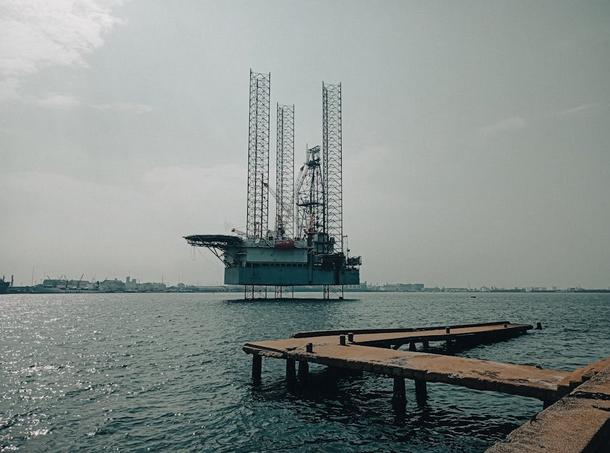Techniques and tools for analyzing offshore structures
Analyzing offshore structures is a complex process requiring a combination of engineering techniques, tools, and methodologies to ensure safety, reliability, and efficiency. Offshore structures must withstand harsh marine environments, dynamic loads, and operational stresses. Below is a detailed overview of techniques and tools used in this field
1. Structural Analysis Techniques
a. Static Analysis
- Purpose: Evaluates the structure under steady-state loads such as gravity, buoyancy, and environmental forces (wind, current).
- Tools: Finite Element Analysis (FEA) software like ANSYS, ABAQUS, or SAP2000.
b. Dynamic Analysis
- Purpose: Accounts for time-varying loads, including wave forces, wind gusts, and operational vibrations.
- Methods:
- Modal Analysis: Determines natural frequencies and mode shapes.
- Time-Domain Analysis: Simulates structural response over time.
- Frequency-Domain Analysis: Assesses response to harmonic or cyclic loads.
c. Fatigue Analysis
- Purpose: Predicts the lifespan of structural components under repetitive loading.
- Techniques:
- S-N Curve Approach: Uses stress-life data for prediction.
- Fracture Mechanics Approach: Studies crack initiation and growth.
d. Nonlinear Analysis
- Purpose: Considers nonlinearities in geometry, material behavior, and boundary conditions.
- Applications: Pile-soil interaction, large deflections, and buckling.
e. Stability Analysis
- Purpose: Ensures the structure can resist buckling and maintain equilibrium under operational loads.
- Methods: Eigenvalue analysis, nonlinear buckling simulations.
2. Load Analysis
a. Environmental Loads
- Sources: Waves, currents, wind, ice, and seismic activity.
- Tools: CFD (Computational Fluid Dynamics) software like OpenFOAM, STAR-CCM+, or FLUENT.
b. Hydrodynamic Analysis
- Purpose: Evaluates wave-structure interaction.
- Methods:
- Potential Flow Theory: For linear wave conditions.
- Morison Equation: For slender structures.
- Diffraction Analysis: For large bodies.
- Tools: OrcaFlex, WAMIT, SESAM.
c. Mooring and Riser Analysis
- Purpose: Examines the performance and integrity of mooring lines and risers.
- Tools: SIMA, MOSES, DeepRiser.
3. Soil-Structure Interaction (SSI)
a. Pile Design
- Analyzes the behavior of foundation piles under axial, lateral, and torsional loads.
- Tools: PLAXIS, LPILE, and GEO5.
b. Geotechnical Surveys
- Purpose: Assess seabed conditions for foundation design.
- Methods: Cone penetration testing (CPT), borehole sampling.
4. Structural Health Monitoring (SHM)
- Purpose: Ensures the long-term integrity of offshore structures.
- Techniques:
- Sensors: Strain gauges, accelerometers, and corrosion sensors.
- Data Analysis: Machine learning and predictive analytics.
- Tools: MATLAB, Python with SHM libraries.
5. Material Analysis
- Purpose: Examines material properties under marine exposure.
- Focus Areas: Corrosion resistance, fatigue strength, and fracture toughness.
- Tools: COMSOL Multiphysics, Abaqus.
6. Software and Tools for Offshore Structural Analysis
General Purpose Software
- ANSYS: Comprehensive FEA software for static, dynamic, and thermal analysis.
- ABAQUS: Advanced FEA for nonlinear and dynamic problems.
- MATLAB: Custom scripting for numerical simulations and data analysis.
- AutoPIPE: Specialized in piping and offshore pipeline analysis.
Specialized Offshore Software
- OrcaFlex: For mooring and riser analysis.
- SESAM: Integrated suite for offshore engineering, including hydrodynamics, structural analysis, and fatigue.
- SACS: Offshore-specific structural analysis for platforms and jackets.
- WAMIT: For wave-structure interaction.
- MOSES: Focused on marine operations and hydrodynamics.
7. Design Standards and Guidelines
Offshore structure analysis adheres to international codes and standards:
- API RP 2A-WSD: Offshore platforms.
- ISO 19901-1: Environmental conditions and loads.
- DNVGL Standards:
- DNVGL-ST-0126: Offshore structural design.
- DNVGL-RP-C203: Fatigue design.
- Bureau Veritas: Certification and classification.
8. Emerging Trends
a. Digital Twins
- Real-time simulations and monitoring of offshore assets.
- Tools: Siemens Digital Industries Software, Dassault Systèmes 3DEXPERIENCE.
b. AI and Machine Learning
- Predictive maintenance and optimization of designs.
- Used for analyzing large datasets from SHM systems.
c. Renewable Energy Structures
- Focus on offshore wind turbines and floating solar panels.
- Tools like FAST (NREL) for wind turbine analysis.
1. Hydrodynamic Analysis of Offshore Structures
Hydrodynamic analysis focuses on understanding how offshore structures interact with water, including the forces exerted by waves, currents, and tides. It is critical for designing structures that can withstand marine environmental loads.
Key Concepts in Hydrodynamic Analysis
- Wave Theories:
- Linear Wave Theory (Airy’s Wave Theory):
- Assumes small-amplitude waves.
- Suitable for deep water and moderate wave conditions.
- Nonlinear Wave Theories:
- Stokes’ Wave Theory: For intermediate depths and higher wave heights.
- Solitary Wave Theory: For shallow water and tsunami-like waves.
- Spectral Methods: Uses wave energy spectrum for irregular sea states.
- Linear Wave Theory (Airy’s Wave Theory):
- Wave-Structure Interaction:
- Slender Structures (Morison Equation):
- Assumes the structure is small relative to the wavelength.
- Total force = Drag Force + Inertia Force.
- Large Structures (Wave Diffraction):
- For structures comparable to the wavelength.
- Solves potential flow equations.
- Slender Structures (Morison Equation):
- Current Effects:
- Adds steady forces to wave-induced forces.
- Amplifies drag forces on structures.
- Marine Growth:
- Alters hydrodynamic coefficients, increasing drag.
Steps in Hydrodynamic Analysis
- Environmental Modeling:
- Simulate wave, current, and tide conditions.
- Use standards like API, ISO, or DNVGL for defining environmental parameters.
- Force Calculation:
- Apply Morison’s equation or diffraction methods.
- Include dynamic effects like vortex-induced vibrations (VIV).
- Response Analysis:
- Rigid Body Motion: For floating platforms (heave, roll, pitch).
- Structural Response: For fixed structures under combined hydrodynamic and structural loads.
- CFD Simulations:
- Models complex flows around the structure.
- Used for high-fidelity analysis of forces, including vortex shedding.
Tools for Hydrodynamic Analysis:
- WAMIT: Potential flow solver for wave diffraction and radiation.
- OrcaFlex: Riser, mooring, and hydrodynamic analysis.
- MOSES: Specialized in marine operations and hydrodynamic loads.
- STAR-CCM+ and FLUENT: CFD for detailed fluid-structure interaction.
2. Fatigue Analysis of Offshore Structures
Fatigue analysis is crucial for estimating the lifespan of offshore structures subjected to cyclic loading from waves, wind, and operational activities. Repetitive stresses can cause cracks and eventual failure, even if the stresses are below the material’s yield strength.
Key Concepts in Fatigue Analysis
- Stress Cycles:
- Fatigue damage is driven by the number and magnitude of stress cycles.
- High-cycle fatigue: Low stress, high number of cycles.
- Low-cycle fatigue: High stress, fewer cycles.
- Fatigue Life Estimation Approaches:
- Stress-Life (S-N Curve):
- Relates stress amplitude to the number of cycles to failure.
- Common for welded and simple components.
- Strain-Life (ε-N Curve):
- Used for components experiencing large plastic strains.
- Fracture Mechanics:
- Focuses on crack growth rate (Paris Law).
- Used for damage-tolerant designs.
- Stress-Life (S-N Curve):
- Cumulative Damage Rule:
- Palmgren-Miner Rule:
- Summation of damage across different stress ranges.
- Damage = Σ(n/N), where nnn is the number of cycles and NNN is cycles to failure.
- Palmgren-Miner Rule:
Steps in Fatigue Analysis
- Load Identification:
- Wave-induced forces (regular or random waves).
- Wind, current, and operational loads.
- Stress Analysis:
- Use FEA to calculate stress ranges at critical locations.
- Include stress concentration factors (SCFs) for welds and notches.
- Cycle Counting:
- Rainflow counting method for irregular load histories.
- Damage Assessment:
- Apply S-N curves or fracture mechanics to estimate damage.
- Life Prediction:
- Determine the structure’s fatigue life and identify critical regions.
- Inspection Planning:
- Focus on high-stress regions for crack monitoring and maintenance.
Tools for Fatigue Analysis:
- SACS: Offshore structural fatigue analysis.
- SESAM by DNV: For detailed fatigue design and assessment.
- ABAQUS: Fatigue analysis using FEA for complex geometries.
- FRANC3D: For fracture mechanics and crack growth simulations.
Comparison of Hydrodynamic and Fatigue Analysis
| Aspect | Hydrodynamic Analysis | Fatigue Analysis |
|---|---|---|
| Purpose | Assess forces from wave, current, and tides. | Evaluate life under cyclic loading. |
| Methodology | Fluid mechanics and wave theories. | Stress-life, strain-life, or fracture. |
| Time Dependency | Short-term or transient wave forces. | Long-term cyclic damage accumulation. |
| Tools | WAMIT, OrcaFlex, MOSES. | SACS, SESAM, ABAQUS. |
| Output | Hydrodynamic forces and motions. | Fatigue life and damage. |

